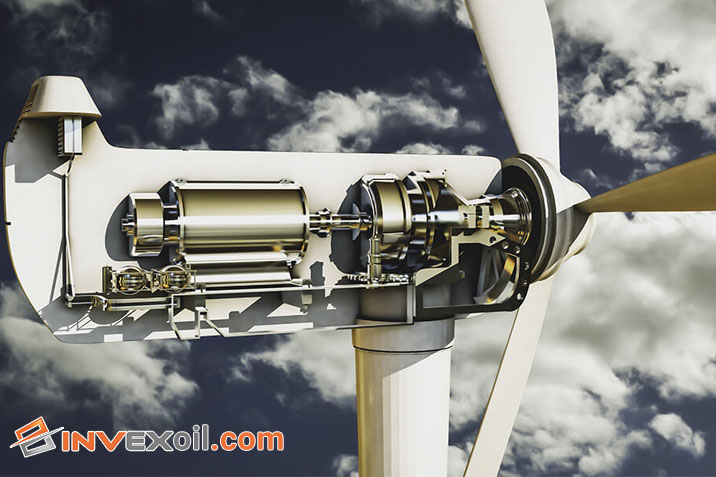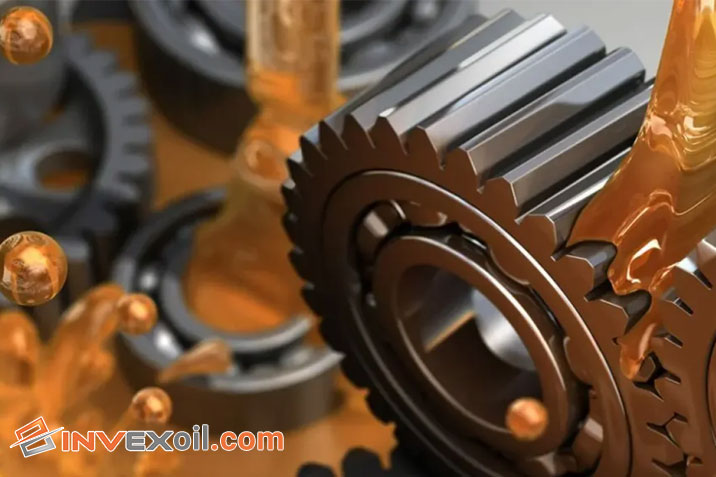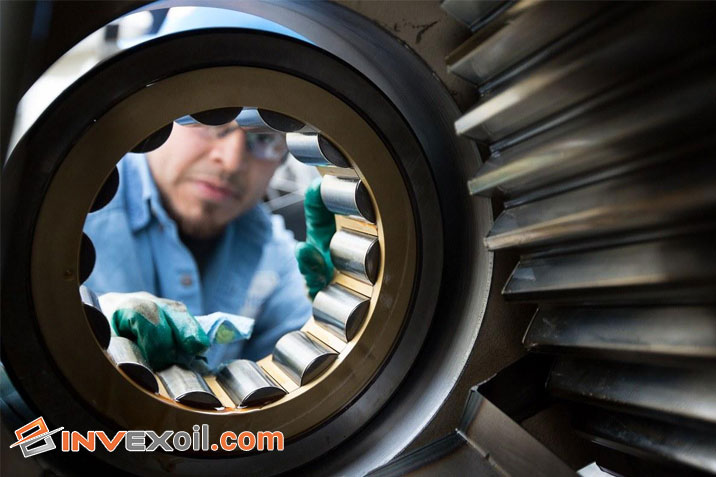Wind turbines play a pivotal role in sustainable energy production, and maintaining their optimal performance relies heavily on ensuring the health of their gearbox and oil. The intricate system of wind turbine oil change is a critical aspect that demands attention. From addressing common problems like oxidation and contamination to understanding turbine oil purification and when to change the gearbox oil, this article delves into essential practices to enhance turbine efficiency and longevity.
Table of Contents
How to Properly Maintain Wind-Turbine Gearbox Oil Health
Maintaining optimal wind-turbine gearbox oil health is paramount to ensure the seamless operation of your wind turbines. By understanding the underlying reasons and embracing key practices for gearbox oil maintenance, you can enhance the longevity and efficiency of your wind energy system.
Key Considerations for Gearbox Oil Maintenance:
- Regular Monitoring: Implement a consistent monitoring schedule to track the condition of gearbox oil.
- Symptom Recognition: Familiarize yourself with common gearbox issues and symptoms, such as unusual noises, temperature fluctuations, and reduced performance.
- Timely Oil Analysis: Engage in periodic oil analysis to assess oil quality, identifying potential problems before they escalate.
- Effective Contaminant Control: Develop strategies to minimize contaminants, including dust and moisture, from infiltrating the gearbox.
- Proper Lubrication: Ensure adequate lubrication by adhering to manufacturer-recommended oil levels and viscosity ranges.
| Common Issue | Symptoms and Indicators |
| Gear Misalignment | Unusual noises during the operation |
| Lubrication Problems | Overheating, increased friction, reduced efficiency |
| Bearing Wear | Vibrations, increased temperature, performance decline |
| Oil Degradation | Darkened oil color, viscosity changes, foul odors |
| Contaminant Infiltration | The gritty texture of oil, increased wear and tear |
Gearbox Oil Health
Maintaining the health of your gearbox oil is essential to ensure the optimal functioning of wind turbines. Understanding the crucial factors influencing gearbox oil quality empowers you to make informed choices for your wind energy system.
Key Factors Influencing Gearbox Oil Health:
| Gearbox Oil Property | Importance |
| Viscosity | Directly affects lubrication efficiency |
| Viscosity Index | Indicates stability across temperature changes |
| Pour Point | Influences oil flow in colder conditions |
| Additives | Enhances oil properties for better performance |
| Cost | Balancing quality with cost-effectiveness |
The importance of choosing the most suitable gearbox oil
The health of your wind turbine gearbox oil directly influences the long-term performance and durability of your wind energy system. By grasping the pivotal factors shaping gearbox oil health and understanding the criteria for selecting the right oil, you can ensure smooth operations and maximize energy output.
| Property | Mineral Oil | Synthetic Oil |
| Viscosity at 40°C (cSt) | 90 | 75 |
| Viscosity at 100°C (cSt) | 190 | 120 |
| Pour point (°C) | -30 | -40 |
| Flash point (°C) | 220 | 260 |
| Oxidation stability | Good | Excellent |
| Corrosion protection | Good | Excellent |
| Wear resistance | Good | Excellent |
| Price | Low | High |
Key Factors for Choosing Gearbox Oil:
- Viscosity: Explore the significance of viscosity, which determines the oil’s thickness and ability to lubricate effectively under different conditions.
- Viscosity Index: Understand how the viscosity index impacts oil performance across varying temperatures, ensuring stable lubrication.
- Pour Point: Recognize the importance of a low pour point, preventing oil from thickening in extreme cold, thus maintaining consistent flow.
- Additives: Delve into the role of additives, such as antioxidants and anti-wear compounds, in enhancing oil properties and extending its lifespan.
- Cost Considerations: Evaluate the cost-effectiveness of different gearbox oils, balancing quality with economic viability.
| Gearbox Oil Property | Importance |
| Viscosity | Efficient lubrication under diverse conditions |
| Viscosity Index | Stable performance in temperature fluctuations |
| Pour Point | Smooth flow even in extremely cold conditions |
| Additives | Enhanced oil attributes for better performance |
| Cost | Balancing quality with economical viability |
Typical Gearbox Problems
Gearbox issues wield considerable influence over wind turbine performance. In this section, we’ll unveil prevalent gearbox oil problems that cast potential shadows on wind turbines, impeding their effectiveness.
Oxidation Due to Heat
Wind turbine gearboxes operate under extreme conditions, subjecting the gearbox oil to intense heat. This leads to oxidation, a chemical reaction that degrades the oil’s quality over time, potentially impacting turbine performance and longevity.
Reduced Lubrication Efficiency:
Oxidation thickens oil, impairing its lubricating capabilities, which can lead to increased friction and wear.
Increased Wear and Tear:
Oxidation-generated sludge and varnish form deposits on gears, accelerating their deterioration.
Contamination and Additive Exhaustion
The environment in which wind turbines operate exposes gearbox oil to contaminants like dust and moisture. Additionally, the gradual depletion of oil additives further challenges the oil’s ability to perform optimally.
| Gearbox Problem | Possible Symptoms | Consequences on Turbine Operation |
| Oxidation Due to Heat | Oil darkening, increased viscosity | Reduced lubrication, higher wear and tear |
| Contamination | Gritty oil texture, discoloration | Diminished performance, gear abrasion |
| Additive Exhaustion | Decreased oil effectiveness, off-smells | Reduced protection, compromised efficiency |
Effects of Contamination:
- Diminished Performance: Contaminants impair oil’s ability to lubricate effectively, reducing gear protection and performance.
- Increased Gear Abrasion: Contaminants act as abrasive agents, accelerating gear wear and potentially causing irreparable damage.
Depletion of Additives:
Effects of Additive Exhaustion:
- Reduced Oil Effectiveness: As additives deplete, oil loses its enhanced properties, undermining its ability to withstand extreme conditions.
- Compromised Efficiency: Depleted additives compromise the oil’s ability to resist oxidation and minimize friction, leading to suboptimal turbine efficiency.
When to Change Wind Turbine Gearbox Oil
Determining the opportune moment for a wind turbine oil change is pivotal in upholding peak turbine performance. Delve into the factors that influence the timing of gearbox oil changes, ensuring seamless operations and extended system lifespan.
Factors Influencing Gearbox Oil Change Timing:
Scheduled Maintenance vs. Condition-Based Analysis
Deciding when to change the gearbox oil is a critical choice. Scheduled maintenance involves regular intervals, whereas condition-based analysis relies on real-time data to determine optimal oil change points, balancing prevention and cost-effectiveness.
Specialized Equipment and Procedures
Successful wind turbine oil changes demand specialized equipment and expert procedures. Advanced tools streamline the process, minimizing downtime, while trained professionals ensure accurate execution for enhanced turbine reliability.
| Approach | Advantages | Disadvantages |
| Scheduled Maintenance | Prevents issues before they arise | May lead to unnecessary oil changes |
| Condition-Based Analysis | Targets oil change based on real-time data | Requires advanced monitoring technology |
Scheduled Maintenance vs. Condition-Based Analysis
Comparing Approaches:
| Equipment and Procedure | Benefits | Significance |
| Advanced Equipment | Efficient oil extraction and replacement | Minimizes downtime |
| Trained Professionals | Expert execution of complex oil change tasks | Ensures proper procedure adherence |
• Scheduled Maintenance:
Adhering to a predetermined schedule reduces the risk of unexpected problems but can lead to unnecessary oil changes.
• Condition-Based Analysis:
Real-time data enables precise oil change decisions, minimizing the likelihood of premature changes.
Specialized Equipment and Procedures
- Advanced Equipment: Cutting-edge tools enable swift and effective oil changes, reducing turbine downtime.
- Trained Professionals: Skilled experts guarantee proper execution of intricate oil change procedures, enhancing overall system reliability.
Conclusion
In conclusion, the meticulous process of wind turbine oil change stands as a cornerstone in sustaining the efficiency and longevity of these renewable energy marvels. By tackling prevalent issues, gauging optimal timing, and employing specialized techniques, this practice ensures that wind turbines continue to contribute to a greener tomorrow while harnessing peak performance and extended operational life.
FAQ
Now, there are some most common questions about this article, and you can read them to find your answers:
When should I change the wind turbine oil?
Regular oil analysis and condition-based assessment guide optimal change intervals.
What issues can arise from oxidized gearbox oil?
Oxidation can lead to reduced lubrication efficiency and increased gear wear.
How do specialized equipment and procedures affect oil changes?
Advanced tools and skilled professionals ensure efficient and reliable gearbox oil replacements.

Hello, This is Matteo Hudson Copywriter from InvexOil. We are here to provide super-important content to help you learn more easily and be involved in the world of Petroleum and Chemistry. We are here to answer your questions, help you to have better services, and also find the best solution for your problems. Don’t be shy and ask your questions in the comment box or call our number. If you want to connect with me directly, you can search for my name on Linkedin.






